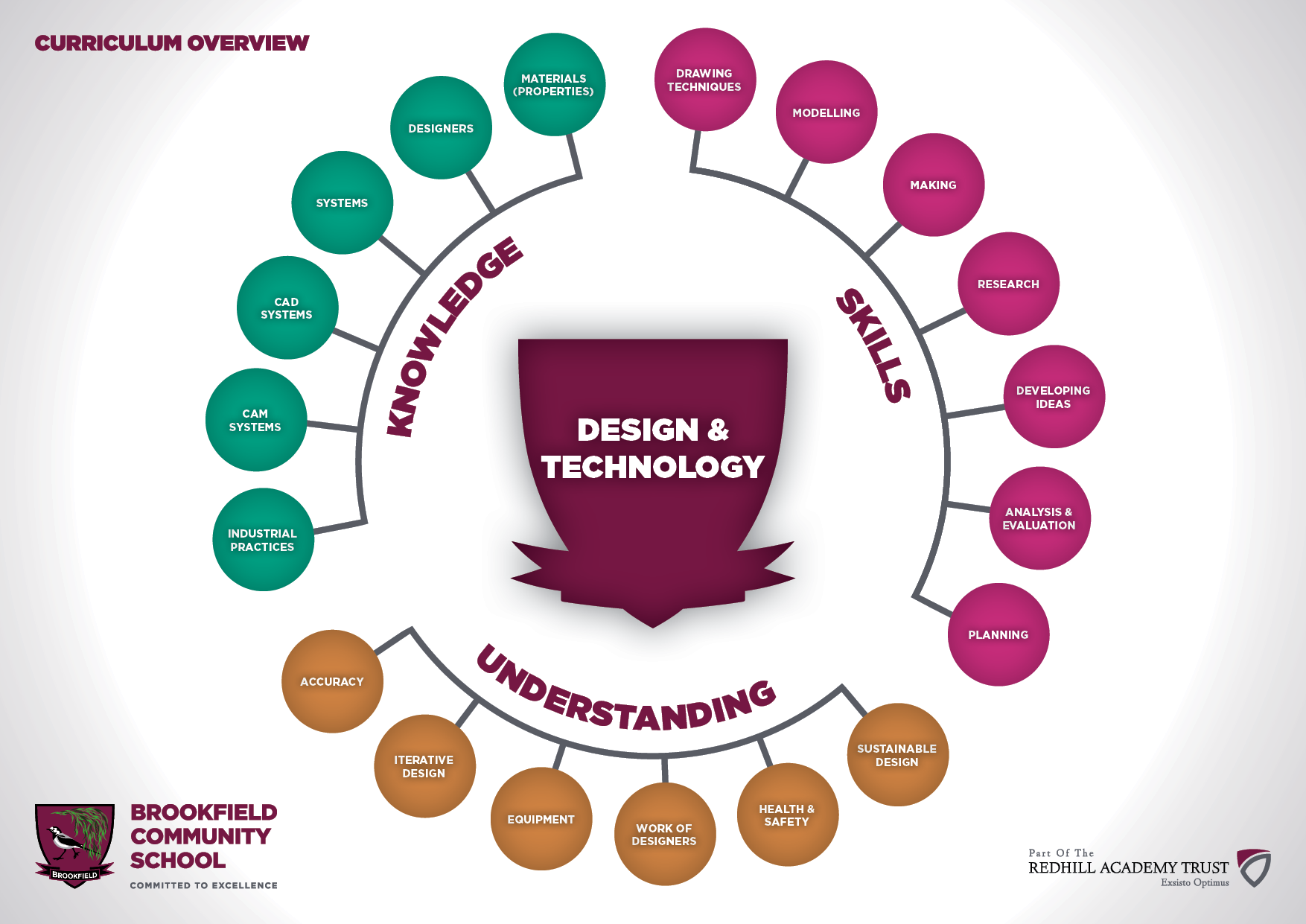Design & Technology
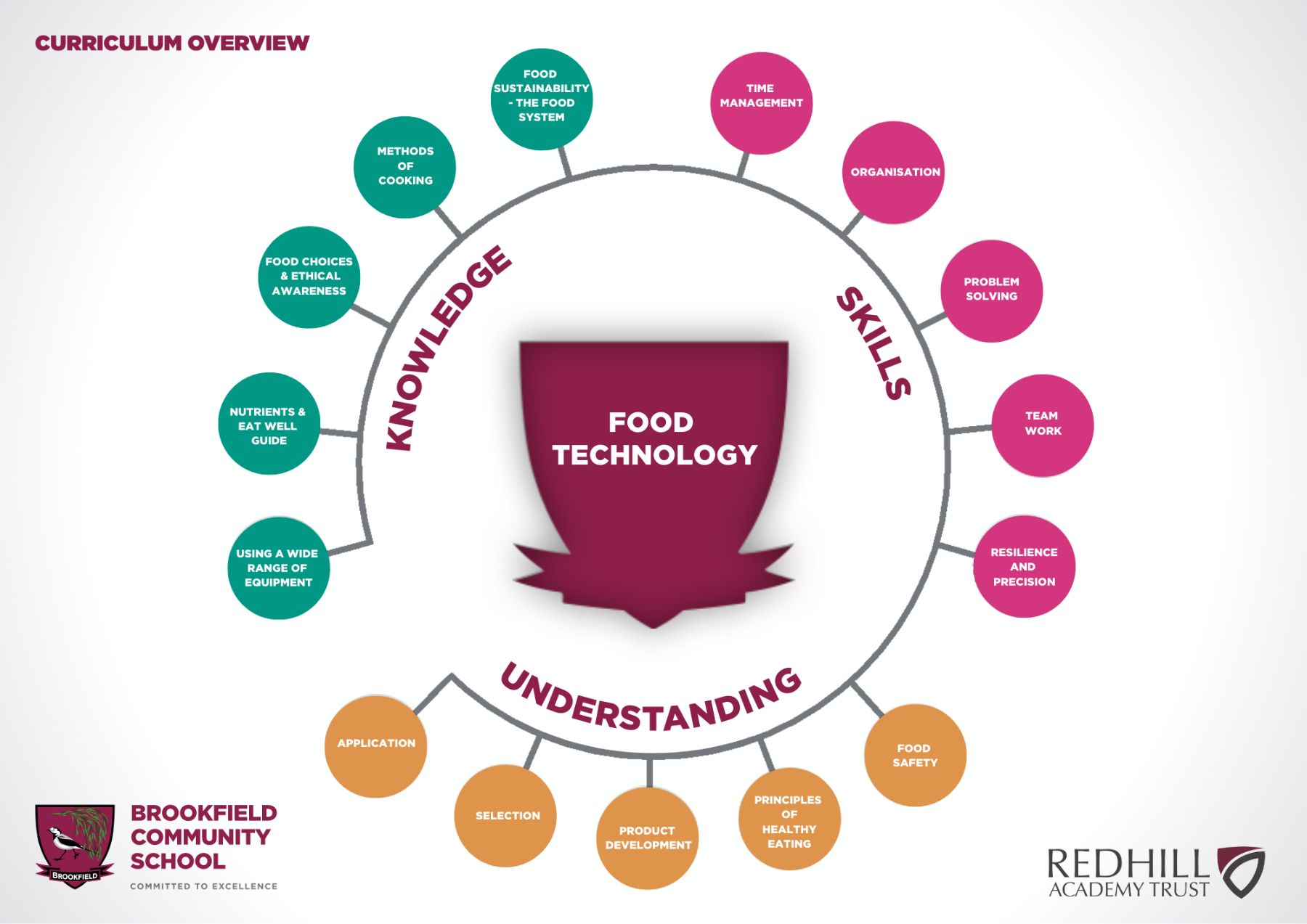
Introduction to Design & Technology
In Design & Technology we develop the confidence to take an active part in creative, problem-solving, and practical activities. The Design & Technology curriculum enables all pupils to enjoy and achieve success in putting their own ideas into practise. Students develop their ability to:
- Plan and implement complex practical projects
- Develop, test, evaluate and communicate their design ideas
- Make products and systems
- Draw upon their understanding of materials and technology
- Manage resources with a concern for the environment
Key Stage 3
Students are taught in groups of 20-24. They stay in the same group all year and have one lesson per week of Design & Technology and one lesson per week of Food Technology.
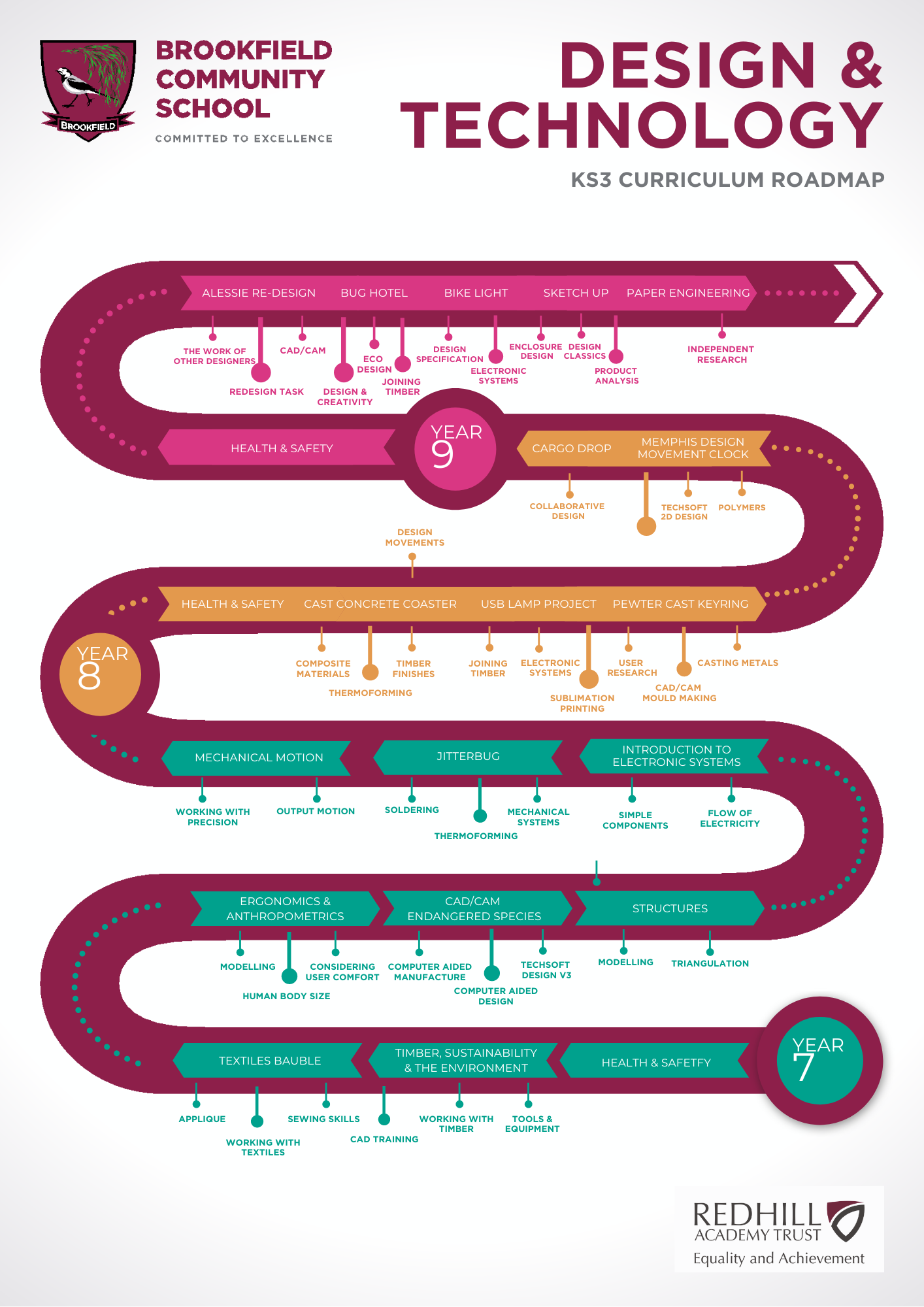
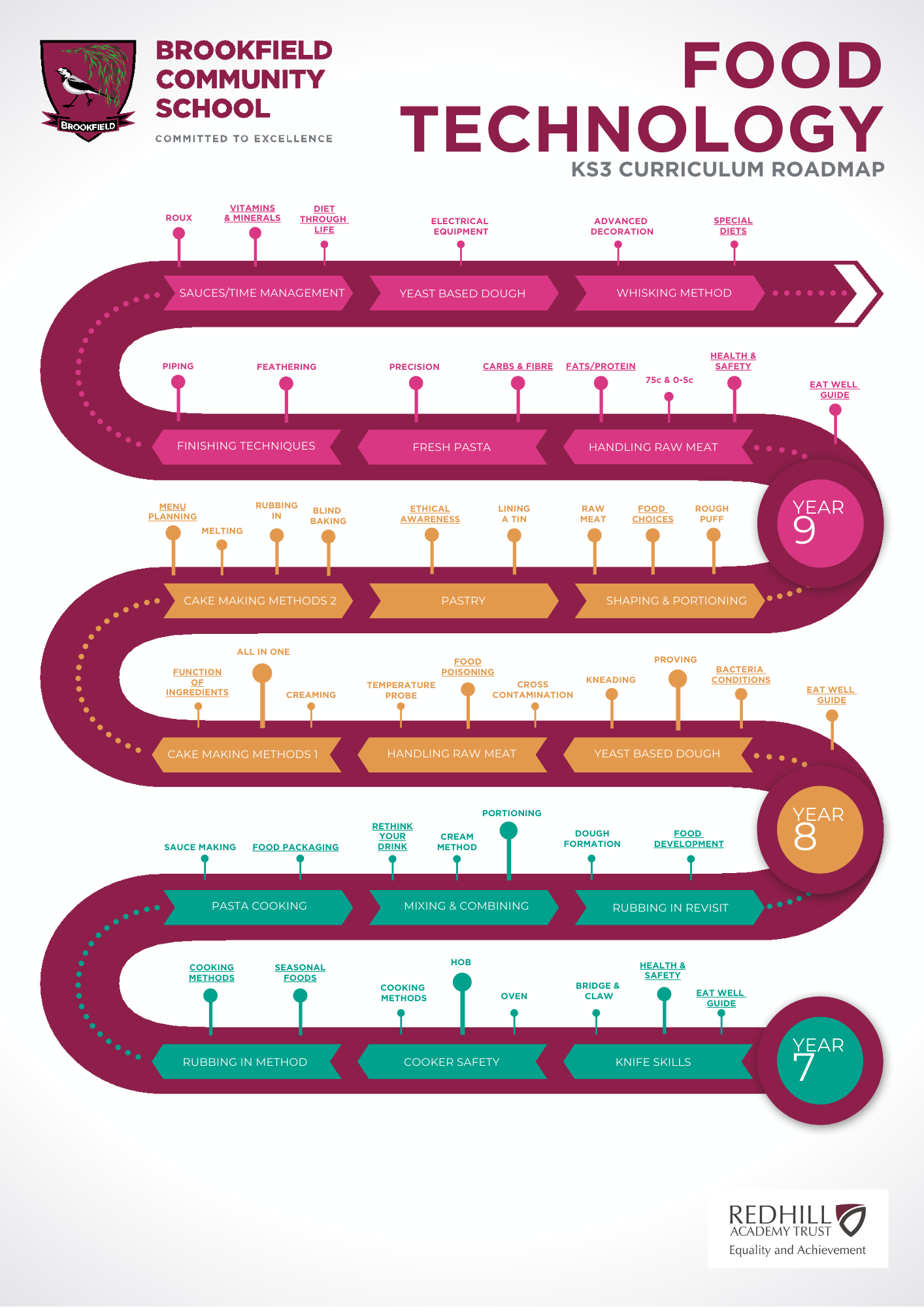
"Kitchens are hard environments, and they form incredibly strong characters" Gordon Ramsay
The Food Technology curriculum develops students into resilient and passionate young chefs who are forward thinkers. This is built through discussion lessons on the wider world around food, which allows students to challenge ethical views and environmental issues in a safe environment. The curriculum also delves into the life of an environmental health officer to explore not only important jobs the subject can lead students to but an understanding of food poisoning bacteria and how we can abide by the correct health and safety in practical lessons. In practical lessons students will develop a wide range of practical skills allowing them to create dishes that are not only tasty but made with precision. Practical skills also develop important life skills like time management, organisation and problem-solving. One of the most important elements of the KS3 Food Technology curriculum is to give students an understanding of a healthy lifestyle, beginning with the Eat Well Guide and then delving deeper into each nutrient including functions, excess and deficiencies, in order for students to lead healthy and fulfilled life.
Key Stage 4
GCSE Design & Technology
Exam Board: AQA
The Course
This is a two-year course in which students learn how to design and make products using wood, metals, plastics materials, and electronic components. There is a practical element to this subject, but the main focus is to learn about design and technology and the role they play in the modern world.
Students will spend time developing their own ideas and studying the work of professional designers, using traditional craft skills as well as computer aided design and manufacture skills. This course has a large coursework component much of which is written up as homework, as well as a 20% maths content.
How are students assessed?
- External Examination - 50%
- NEA (Coursework project) - 50%
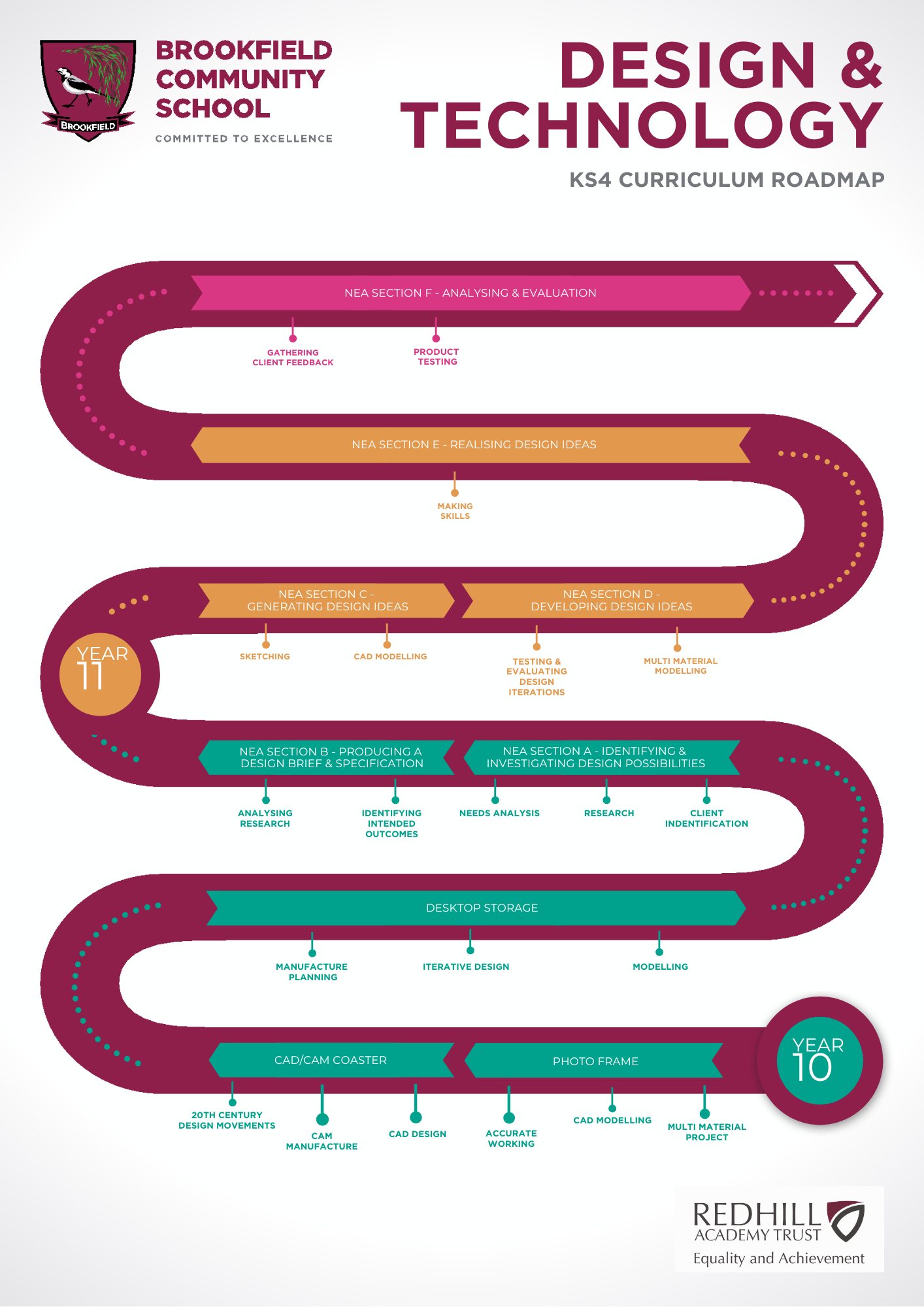
Level 1 & 2 Vocational Award in Engineering
Exam Board: WJEC
The Course
The vocational award in engineering is a 2-year course in which students learn all about the engineering sector and develop their own skills in using engineering to solve real life problems. Students learn how to use a wide range of tools and equipment to make a number of different products.
Students will:
- Learn why engineers choose certain materials and components to make products
- Investigate how products are made commercially
- Identify the best practise when it comes to safety and risk management
- Develop research, observation, recording, interpretation and measuring skills
- Plan, reproduce and test engineered products
- Create prototypes that meet a manufacturing specification
- Record, analyse and evaluate data and outcomes
How are students assessed?
- Unit 1 is a coursework style design project - 25%
- Unit 2 is a practical coursework project - 50%
- Unit 3 is an external examination - 25%
Level 1 & 2 Vocational Award in Hospitality and Catering
Exam Board: WJEC
The Course
This course enables students to gain an insight into the hospitality and catering industry. Students will learn how this multi-billion pound sector works and what makes businesses within it successful. Students will gain knowledge of customer care, the operation of a restaurant kitchen, the front of house service area, food preparation time management and food presentation skills.
The course is split into 2 units:
- The Hospitality & Catering Industry – This involves studying the make-up of the industry and the types of business that operate within it. It includes health & safety, food safety legislation, food ill-health & allergies, and environmental issues.
- Hospitality & Catering In Action – This involves the study of nutrition, menu planning to suit dietary needs, cooking methods and presentation techniques.
How are students assessed?
- Unit 1 – externally assessed written exam – 40%
- Unit 2 – internally assessed NEA (Non examined assessment) – 60%.
The NEA takes place during Year 11 and requires students to nutritionally plan, prepare and cook a variety of dishes for a given customer group or dietary need. The project consists of both written work and a 3-hour practical exam which assesses their practical skills and ability.
Hospitality and Catering is Britain’s fourth-largest industry and accounts for around 10% of the total workforce. Since 2010, over 25% of all new jobs have been within the hospitality and catering sector with the majority of new roles falling within the 18-24 age group.
Employment in hospitality and catering can range from waiting staff, receptionists and catering assistants to chefs, hotel and bar managers and food technologists in food manufacturing.
An ideal hospitality and catering student will be;
Creative – You will need to come up with fresh ideas and vision for your dishes and have the ability to try out new ideas.
Practical – You will develop a wide range of practical skills using different ingredients.
Patient– You will need to work with accuracy to achieve quality and realise not everything works out first time.
Key Stage 5
A Level Design & Technology
Exam Board: AQA
The Course
Students learn about designing, researching and developing ideas, modelling, building and testing prototypes. Students will study a wide range of materials and a number of manufacturing processes including laser cutting, 3D printing, casting, welding and brazing, moulding, laminating and computer aided manufacturing. Students also study the work of contemporary designers and consider issues such as sustainability, the consumer society and innovation.
Year 12 topics include:
- A bendy ply storage product
- A welded steel banana hanger
- A laser cut flat pack lamp
- A dovetailed oak box with marquetry inlay
- Exam preparation for questions on design methods, materials and processes.
Year 13 topics include:
- A major coursework project of a complex nature
- Exam preparation for questions on design methods, materials and processes.
How are students assessed?
- 2 written exam papers taken at the end of Year 13 - 50% of the marks
- A coursework project assessed at the end of Year 13 - 50% of the marks.
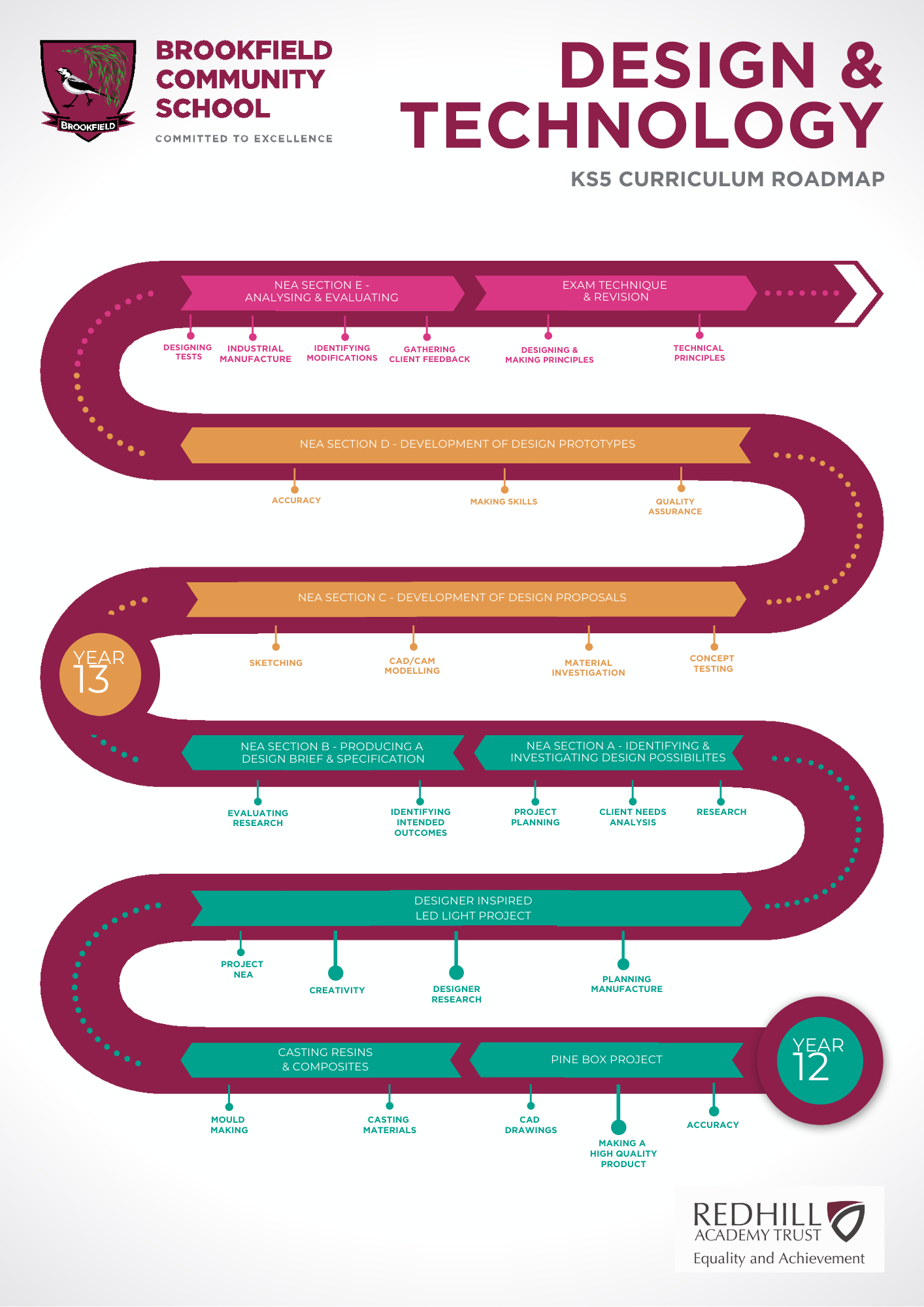
The department is open for students to come in and work on their projects most days both after school and at lunchtimes. There are also Key Stage 3 after school clubs both in D&T and in Food Technology. We run various trips as part of the Key Stage 4 and 5 courses. Recent venues have included:
- Rolls Royce
- Hemswell Recycling Plant
- CASA hotel
- Techman Engineering
- Bannerbox Aluminium Structures
- Unibar
- Sheffield Hallam University
- University of Sheffield.
Progression Opportunities
The Key Stage 4 D&T courses lend themselves for students to progress onto A Level Product Design at Brookfield, or many of the wide range of technology based courses offered at Chesterfield College, as well as apprenticeships.
The Key Stage 4 Hospitality and Catering course provides a foundation into the Hospitality & Catering industry. It is also useful for those interested in other areas such as nutrition, diet, and the tourism & travel industries. It is also ideal for those simply interested in cooking and food, providing them with useful knowledge of healthy eating and food preparation for later on in life.
Studying design and technology provides students with the opportunity of following a variety of career paths including engineering, product design, furniture design, computer aided design, graphic design, advertising, marketing, architecture, interior or theatre design and teaching. It is also a useful preparation for any career where it is important to manage time and resources, to communicate clearly both verbally and on paper, to solve problems creatively and to work effectively in a team. Universities and business regard all of these very highly.


